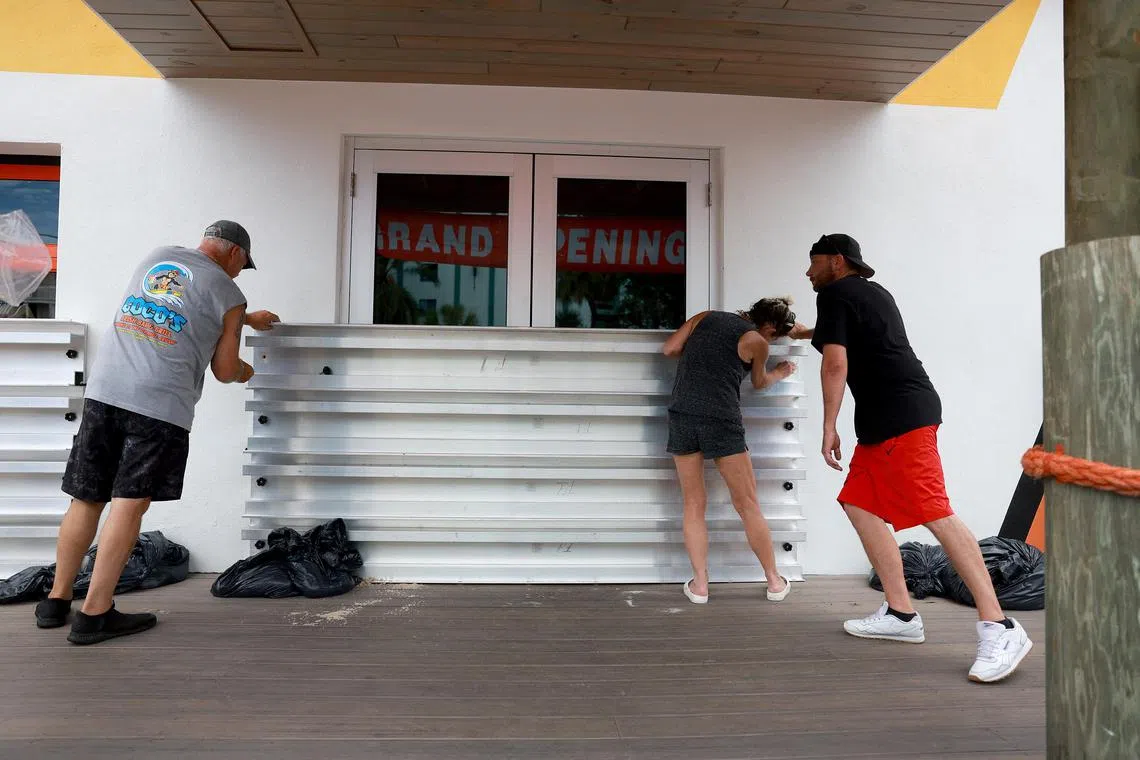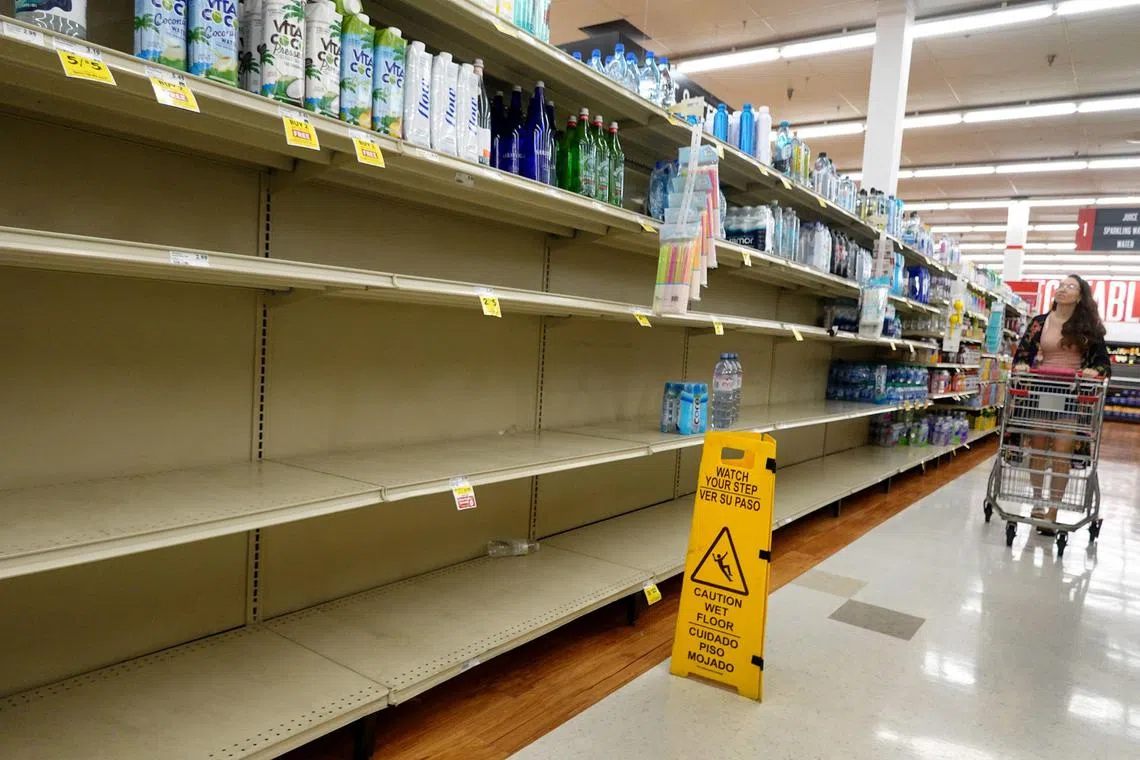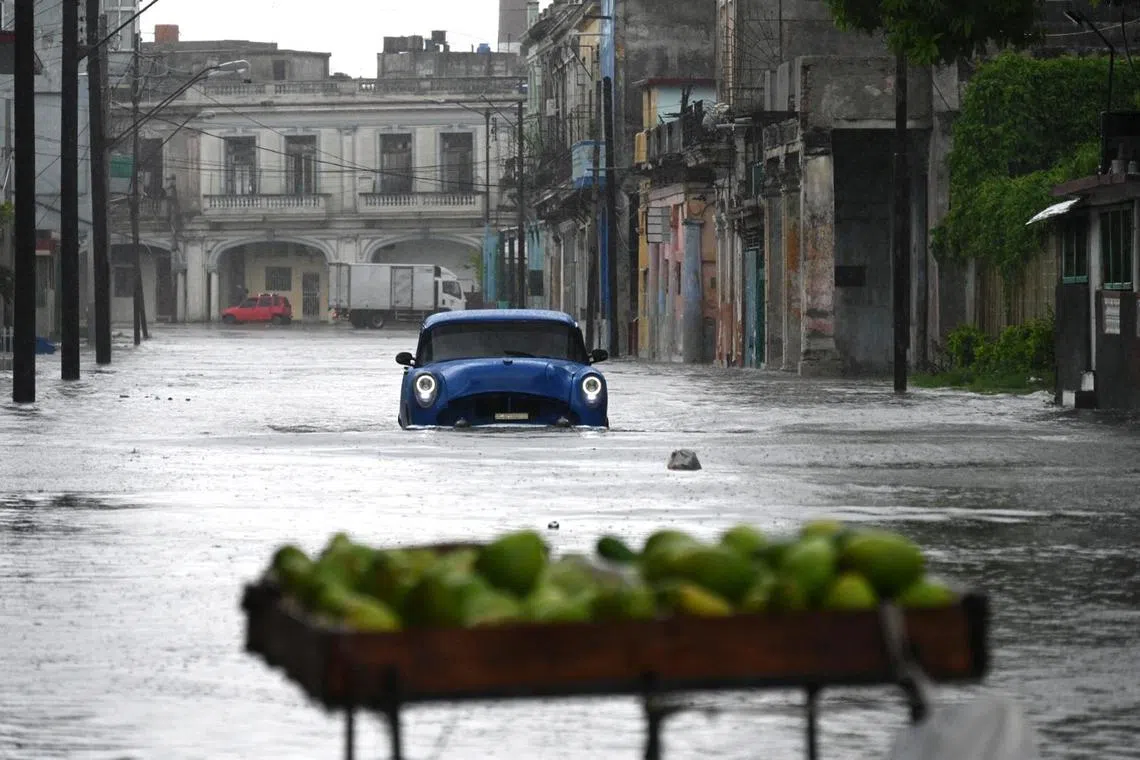Florida braces for 'extremely dangerous' Hurricane Idalia
Sign up now: Get ST's newsletters delivered to your inbox

(From left) Steve Leitgeb, Michelle Fedeles, and Brandon Hadley place protective shutters over Coco's Crush Bar & Grill, in Indian Rocks Beach, Florida. ahead of Hurricane Idalia.
PHOTO: AFP
Follow topic:
STEINHATCHEE, Florida - Hurricane Idalia barrelled towards the west coast of Florida on Tuesday, triggering mass evacuation orders and flood alerts as authorities warned the storm could strengthen to “extremely dangerous” levels before landfall.
The US National Hurricane Centre (NHC) said Idalia, a Category 1 storm with winds of 140kmh, was churning on Tuesday morning off Florida’s south-west, and bringing tropical storm conditions to western Cuba and flooding in Havana.
Warm Gulf of Mexico waters near 31 deg C are expected to turbocharge Idalia into an “extremely dangerous major hurricane before landfall on Wednesday,” the NHC said.
Major hurricanes are Category 3 or higher on the five-level Saffir-Simpson scale, with winds above 177kmh that the NHC says will cause “devastating damage.”
Florida Governor Ron DeSantis urged those in the evacuation areas along the Gulf coast to go “now.”
“You don’t have to go hundreds of miles,” he told a news conference, urging coastal residents in the 23 counties under evacuation orders so far to get to shelters or hotels that were out of the danger zones.
Marshy ‘Big Bend’ area in its path
Almost 150 people were killed last year when Hurricane Ian slammed Florida’s west coast
Idalia is expected to make impact farther north along the coast, in the so-called Big Bend area – a vast marshy region which, unlike most other coastal areas around Florida, does not have barrier islands.
“We’ve not really had a hurricane strike this area for a long long time,” Mr DeSantis said, at a Tuesday morning press conference.
“You are going to see a lot of debris – there’s a lot of trees along that track,” added the governor, who has suspended his campaign for president to handle the crisis.
The NHC said in its latest advisory that forecasts were increasingly confident Idalia would “reach the coast of Florida adjacent to Apalachee Bay Wednesday morning,” and could bring “storm surge inundation of 10 to 15 feet (3-5 metres) above ground level.”
In Steinhatchee, one of the small towns dotting the Big Bend, Robert Bryant was making final preparations Tuesday to evacuate inland with his two cats and a dog.
“We are out on the water, so we are going to be the worst ones to get hit,” said the 18-year-old student, whose home built on stilts lies close to the mouth of a river.
“Hopefully, it just blows over and we have a bit of wind... but you prepare for the worst and hope for the best.”

People stock up ahead of Hurricane Idalia’s expected arrival.
PHOTO: AFP
US President Joe Biden spoke with Mr DeSantis on Monday and approved an emergency declaration for the state, promising it would have his full support, a White House spokesman said. The US Federal Emergency Management Agency (Fema) has also deployed staff.
The Tampa International Airport has closed for the storm while the nearby US Air Force base has ordered a mandatory evacuation of “non-mission essential individuals and dependents.”
‘Marine heat wave’
Georgia and South Carolina are also under storm watches as the system is expected to cross north-east over Florida before exiting into the Atlantic.
Flash and urban flooding may hit parts of Florida and southern Georgia into Wednesday, the NHC said. Flooding could reach parts of South Carolina Wednesday into Thursday.
On Monday, thousands of Cubans rushed out of the storm’s way as the provinces of Pinar del Rio and Artemisa as well as Isla de la Juventud, an island, were placed under hurricane warnings.
Streets were flooded in Havana and some of the island nation’s western provinces as Idalia brushed past.
After clipping Cuba the storm moved out over the Gulf, which scientists say is experiencing a “marine heat wave” – energising Idalia’s winds as it races towards Florida.
On Monday, Idalia dumped rain on Mexico’s state of Quintana Roo, home to Cancun and other coastal tourist resorts.
Scientists have warned that storms are becoming more powerful as the world gets warmer due to climate change. AFP

An old American car drives through a flooded street in Havana, during the passage of tropical storm Idalia.
PHOTO: AFP

